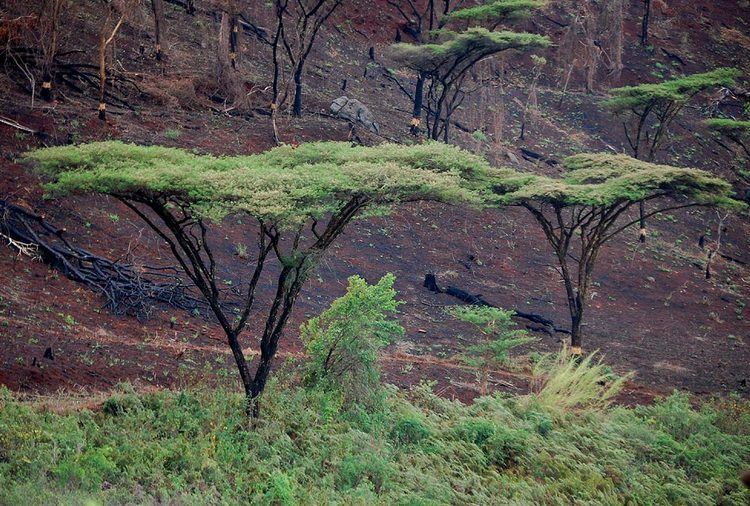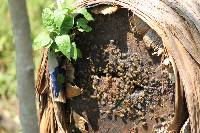
Bark: Greyish brown, rough with papery peels on young trees.
Leaves: Compound with many small leaflets, feathery pinnae; 15-40 pairs.
Flowers: The pinkish flower buds open into many white round heads.
Fruits: Grey or brown, straight or slightly curved and softly hairy dry dehiscent pods up to 12 cm long.
Geographical distribution and ecological requirements: A. abyssinica is widespread in Africa from Ethiopia southwards to Zimbabwe. It is commonly found in wooded grasslands and forest edges, especially in highland areas, from 1200-2300 m. In Rwanda, the species has been recorded in Huye, Bugesera and Akagera National Park, at 1400-1800 m where rainfall ranges betwen 214-1634 mm.
Uses: Firewood, charcoal, fodder, timber, ornament, shade, agroforestry, medicine and bee forage.
Propagation: This species can be propagated by seedlings, direct sowing and wildings.
Seed information: Small seeds, about 16000-18000 seeds per kg. Seeds are very much attacked by beetles while still in pods. Seed storage and pre-germination treatment: Seeds should be soaked in water for 36-48 hours before sowing in order to break dormancy. Seeds remain viable for long period if kept in both sealed airtight containers and places that are dry and cool.
Management: Coppicing and pollarding.
Remarks: The species is drought tolerant, fixes nitrogen and is good for erosion control.
Beehive (Umuzinga (Icyima)
Horn snare (Umurito)
Mortar and pestle (Isekuru n'umuhini)
Uses: Food Prepration, Hunting, Animal Husbandry
Plant Part(s) Used: Stem
Copyright (c)2020. Data portal development has been supported through the cooperation of Biocultural Diversity International and the National Herbarium of Rwanda (NHR)
at the Center of Excellence in Biodiversity and Natural Resources Management (CoEB).
We are currently actively seeking additional funding for this project.
Powered by Symbiota software with site management and data curation support by Michael B. Thomas, PhD. Usage Policy.







